It isn’t easy to write, it’s even harder to do it for your brand. Here are 5 important lessons we learned at Blinkist that will help you succeed.
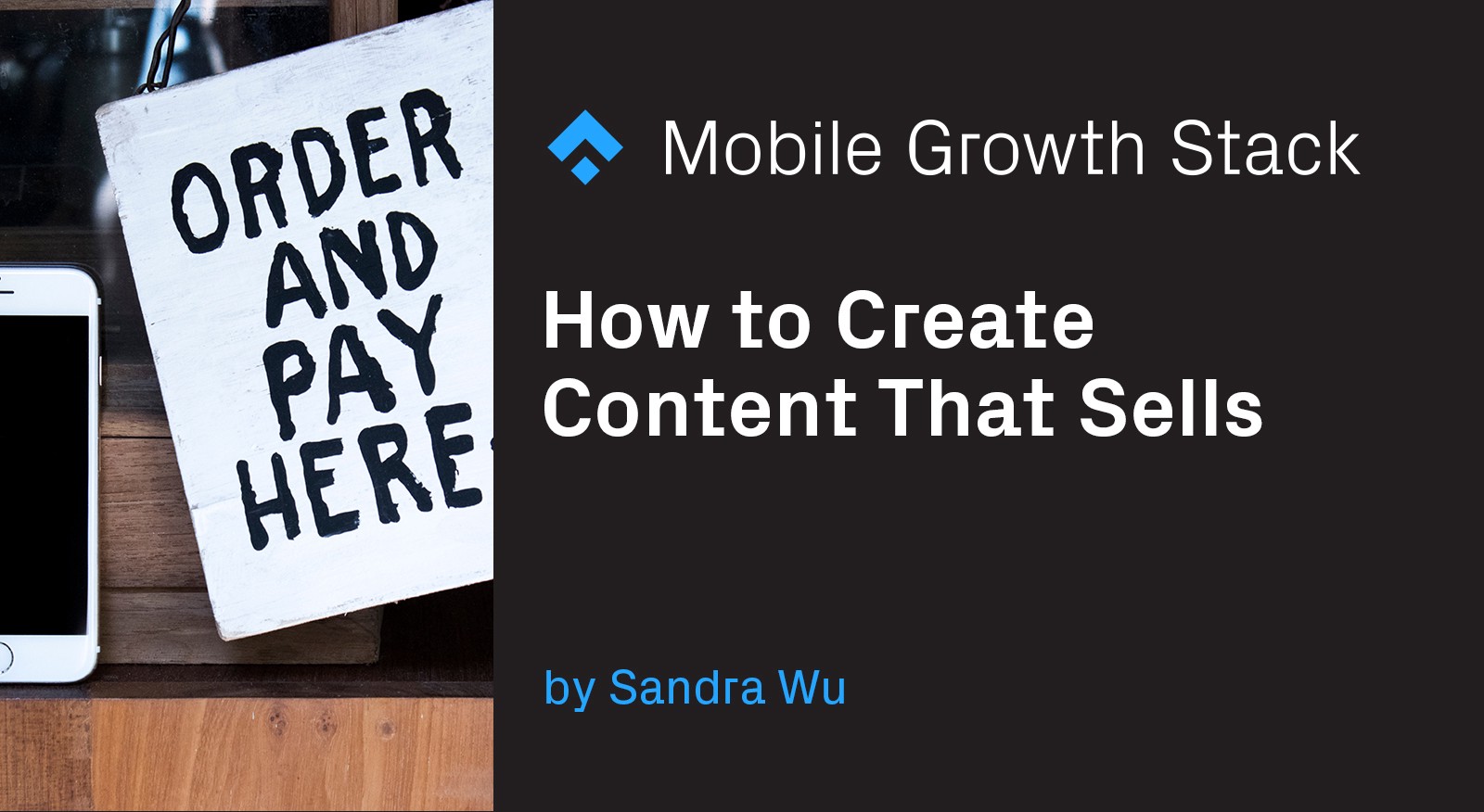
Whether you’re creating a blog post, a push notification, or a few lines for a Facebook ad, writing can seem like the toughest task imaginable.
Good content takes a lot of trial and error to get right. At Blinkist, we’ve made all the mistakes, so you don’t have to. After 2 years, over 200 tests and hundreds of hours in the writing room, we’ve turned our magazine into a powerful tool for user acquisition.
In this post, I’ll share with you the 5 key lessons that we learned to create content that sells.
Lesson 1: Start with why.
Sometimes, the hardest thing about marketing a product is believing in it yourself. Every product has a cause worth fighting for. Figure out what yours is, write 500 words about it, I guarantee that will do well.
Don’t believe me? Simon Sinek’s bestselling book Start With Why details the rise and fall of corporations who have forgotten their mission. As a product becomes more complex, it’s easy to lose track of why it was created in the first place. Content marketing forces you to confront that.
Take our app for example. On the surface, Blinkist is a reading app that turns nonfiction books into digestible content. However, it’s much more than that, it’s a tool for learning.
That message wasn’t just more inspiring, it was also better for our pockets. By including our core mission on landing pages, our sign-up conversions increased by 39%.
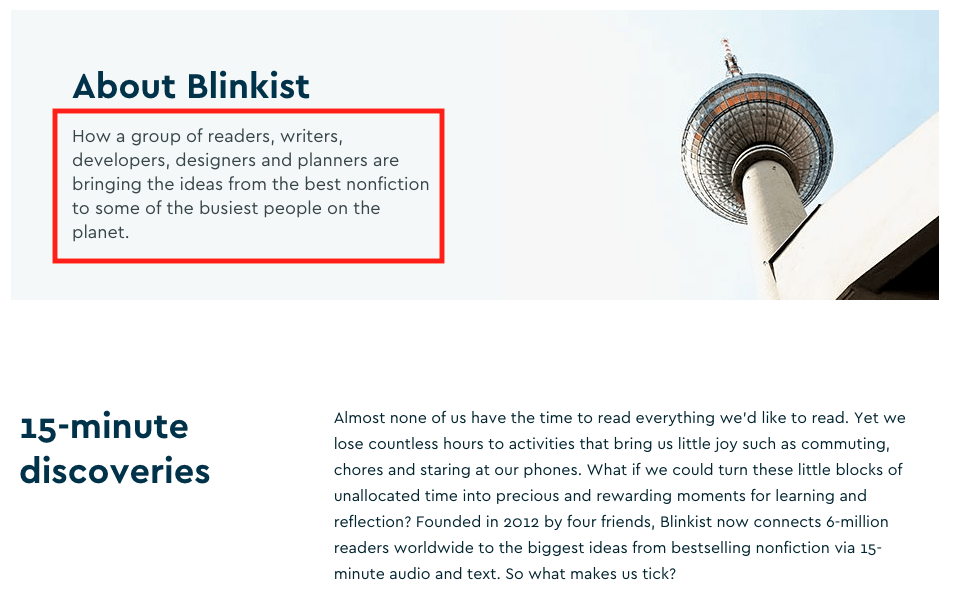
I encourage you to rethink the basis of your marketing message.
Does your content capture the essence of your product? If not, go deeper.
Lesson 2: Don’t expect people to read everything.
Once you’ve found a strong thesis, back it up with arguments. Unfortunately, unlike a university professor, the typical reader will give you 30 seconds before grading your piece.
This might seem unfortunate for mankind, but is actually a survival instinct we’ve developed to protect us from all the noise on the internet.
To appeal to the modern reader, write your articles like an inverted pyramid — put the most important stuff first.
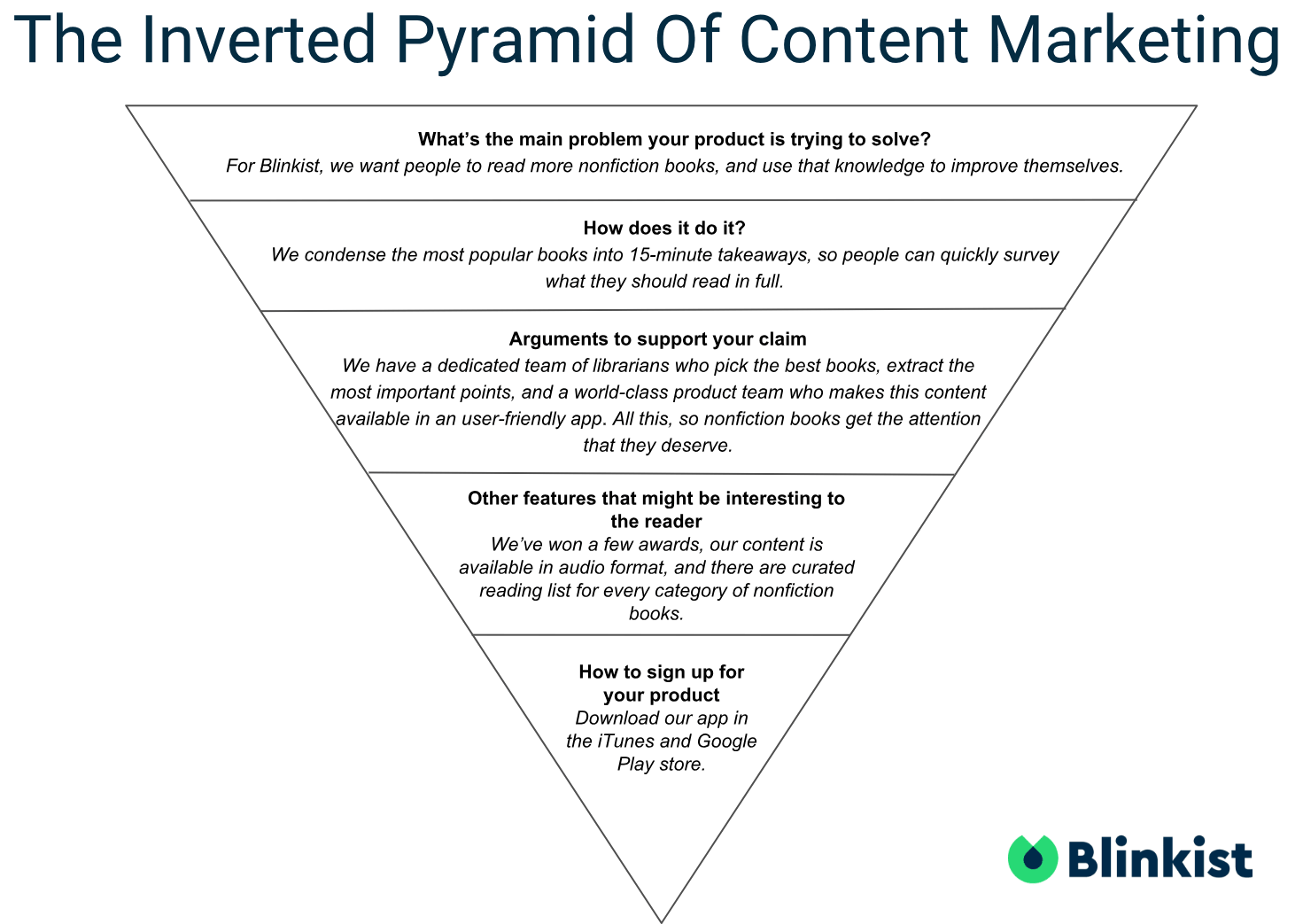
- What’s the main problem your product is trying to solve?
For Blinkist, we want people to read more nonfiction books, and use that knowledge to improve themselves. - How does it do it?
We condense the most popular books into 15-minute takeaways, so people can quickly survey what they should read in full. - Arguments to support your claim.
We have a dedicated team of librarians who pick the best books, subject experts who extract the most important points, and a world-class product team that makes this content available in a beautiful, easy-to-use app. All this, so nonfiction books get the attention that they deserve. - Other features that might be interesting to the reader.
We’ve won a few awards, our content is available in audio format, and there are curated reading list for every category of nonfiction books. - How to sign up for your product.
Download our app in the iTunes and Google Play store.
Notice that we wouldn’t start articles with what awards we’ve won because as nice as that is, it’s irrelevant until we can make a case for our app.
For writers, this means that:
You don’t need to spend days perfecting your content, just make sure you mention the right things.
Lesson 3: Don’t spend all your time writing.
By now, I’ve given you an idea of how to provide valuable content, but is that enough?
The answer is — no. Good content makes a strong foundation, but great layout and designs will take you rest of the way. To put this in perspective, this is the role each aspect of an article plays.
50% of the results
What you write (What problem is your product trying to solve? How does it do it?)
How you write it (How will you tell that story in an engaging way?)
30%
Layout (Does it look trustworthy?)
Conversion elements
20%
Assets (images, videos, etc.)
Designs (Is it on-brand?)
Take this test for example, by changing the styling of quotes, we managed to increase conversions by 17%.
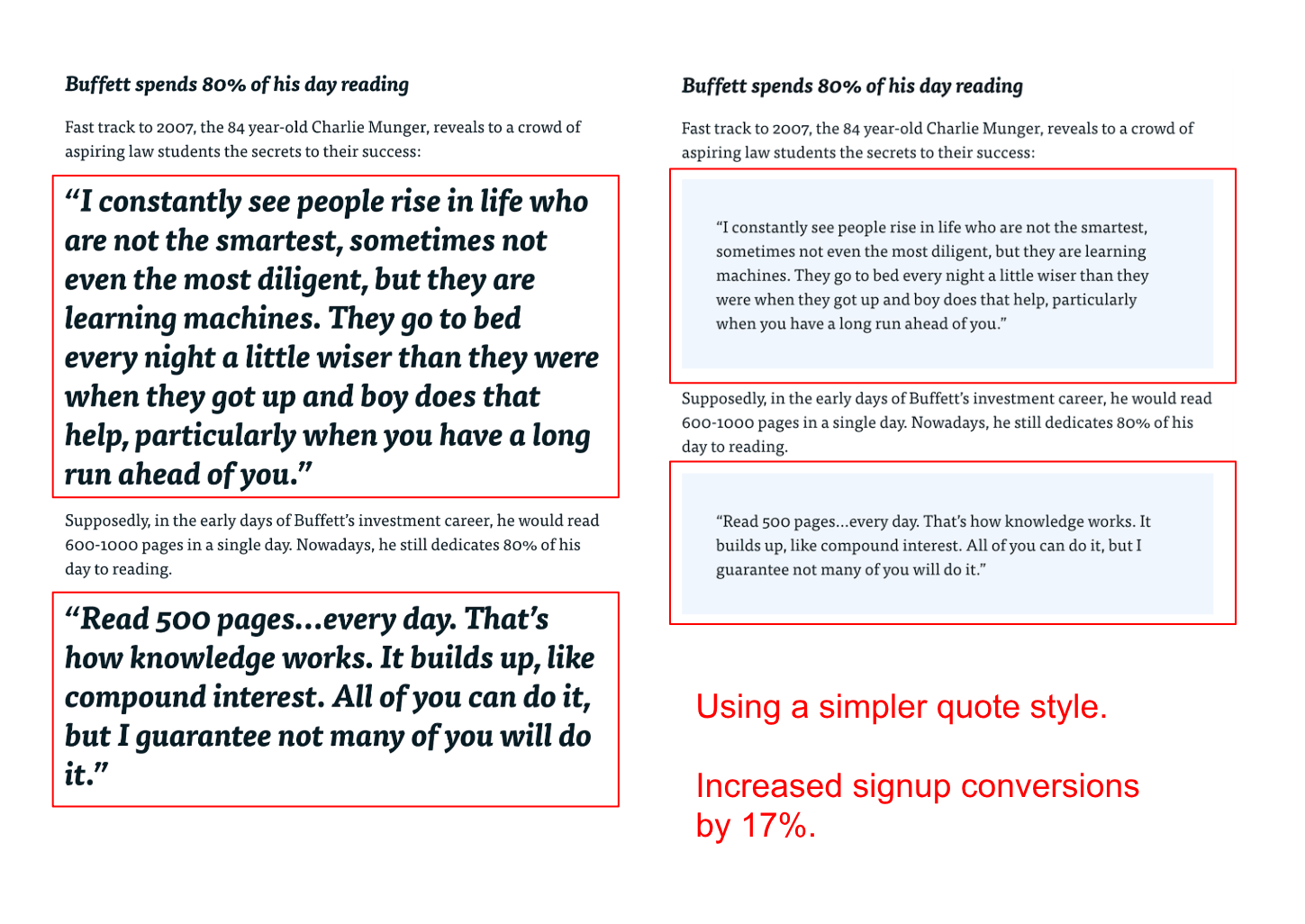
Most of the time, the simpler (sometimes less beautiful) design performs better, but this doesn’t mean that the internet has a bad taste, rather than readability is more important than aesthetics.
Therefore:
As important as content is, it should only take up half of your time, dedicate the rest of your effort to the layout and design.
Lesson 4: Don’t be obsessed with converting readers.
In content marketing, ‘content’ comes first. Your job is to give people valuable content first, and then convert them.
All our pages have a smart banner — an app download prompt that sticks to the top as readers scroll. Other than that, we haven’t had much success with other conversion elements.
We tried adding buttons where people tend to drop off:
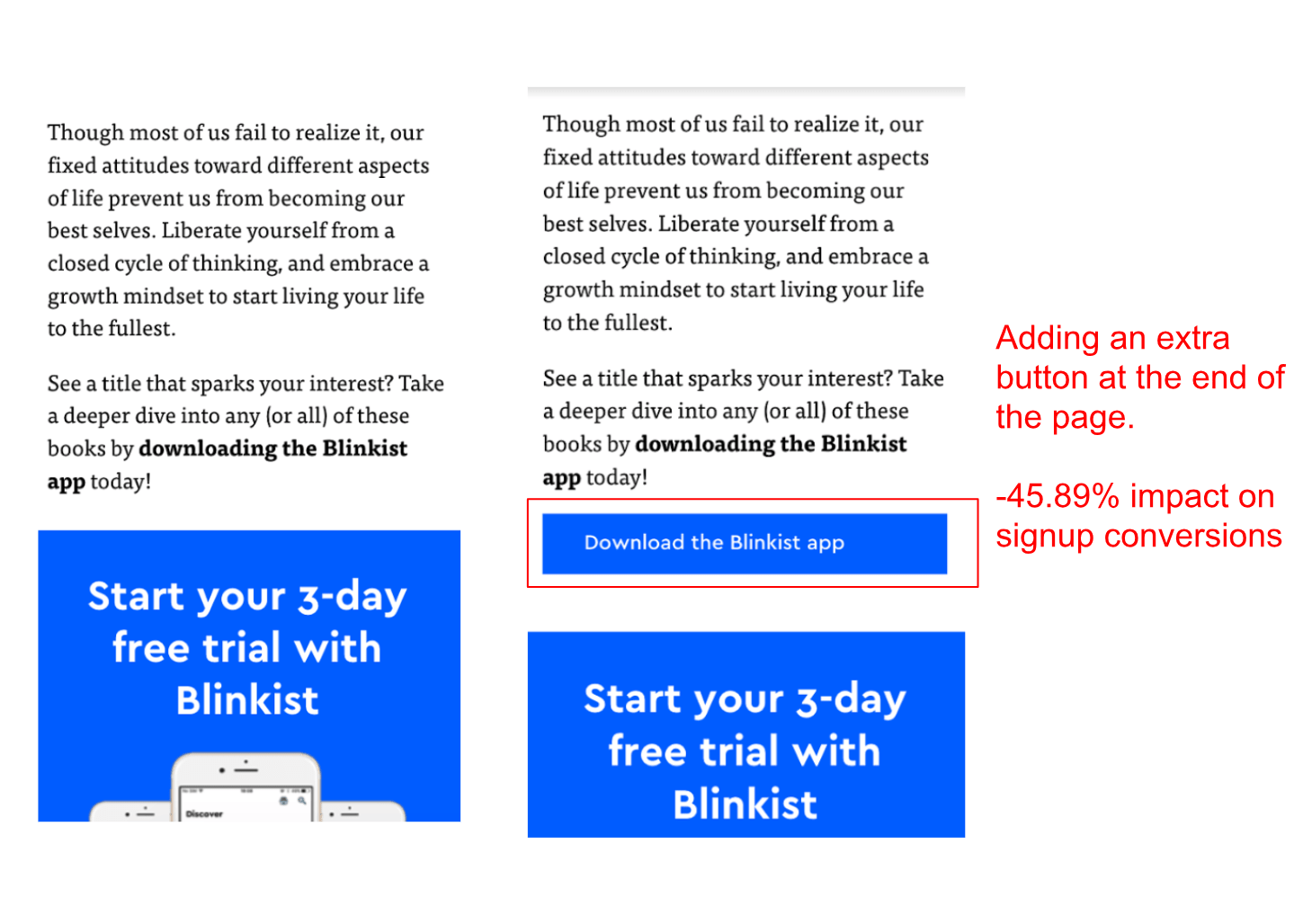
We tested midway/inline banners because everyone else had them:
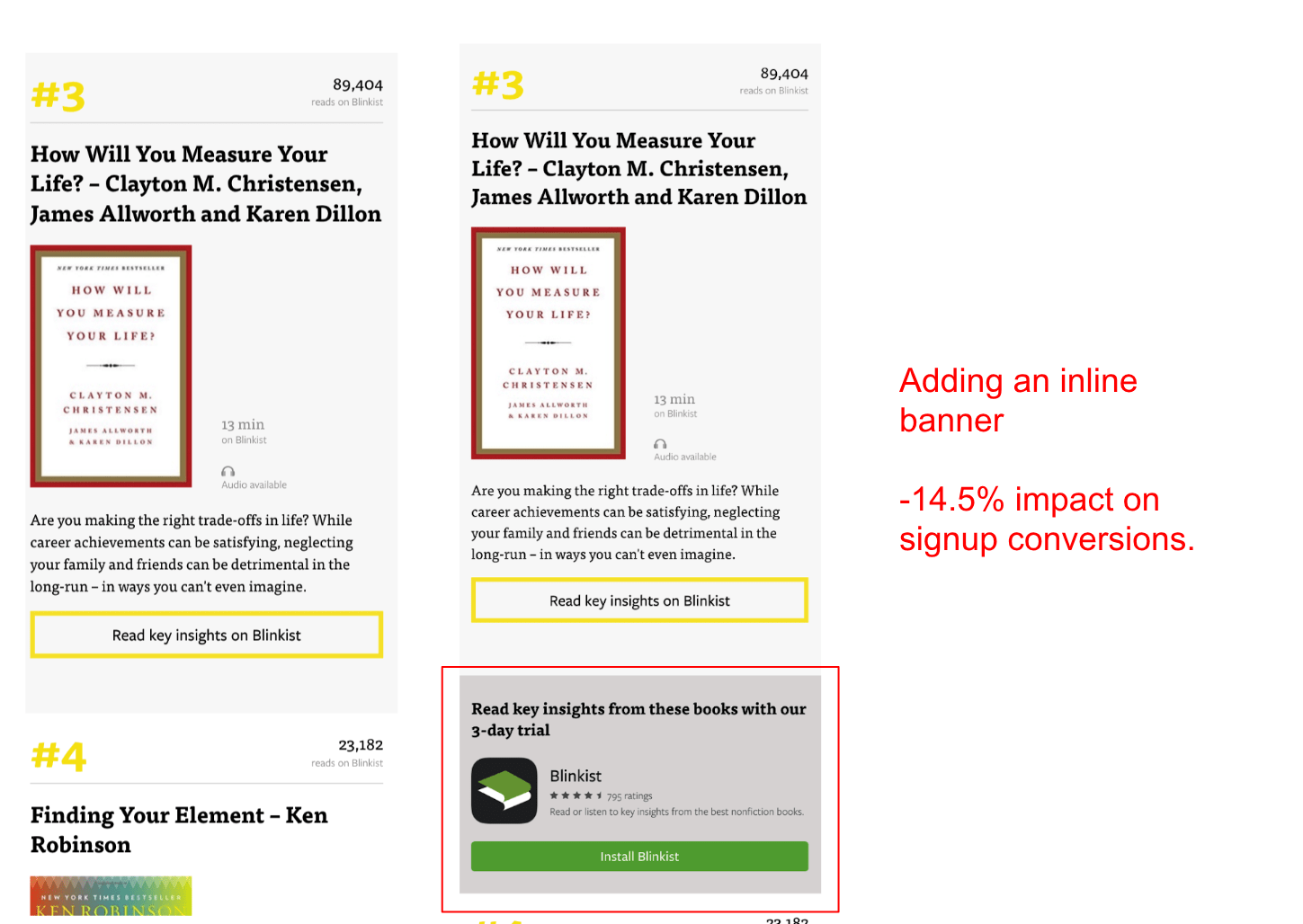
We also tried anchor texts (texts with links) for those who are banner blind, but that also didn’t improve conversions.
These conversion elements didn’t do a great job at capturing readers who we already lost and turned off engaged readers who would’ve otherwise converted.
We effectively ruined a good reading experience in order to appease the wrong people.
After too many failed tests, we decided to keep our layout simple and rely on good content to do the converting.
Our rule of thumb is:
Keep conversion elements to a minimum, and only add extra ones when content allows it.
Lesson 5: Ignore the superficial stuff.
In the final lesson of this blog post, I want to warn you to not take your work too seriously.
I mentioned earlier that people don’t read articles, they scan them. As a result, they follow an F-pattern when they read. You can see an example below.
![]()
This means:
Sometimes, it doesn’t really matter how long your article is, what images you use, or what fancy banners you have in place, readers will ignore everything outside of the F-shape.
We discovered this after 5 failed tests trying to find a better banner image.
We had an article that had a banner image of a woman’s back. We thought, this isn’t the most inspiring, we could do better.
We first swapped it for an image of a woman who’s looking up from her phone, as if she’s experienced something profound. It’s important to note that this was one of our best performers on FB, Outbrain and Taboola.
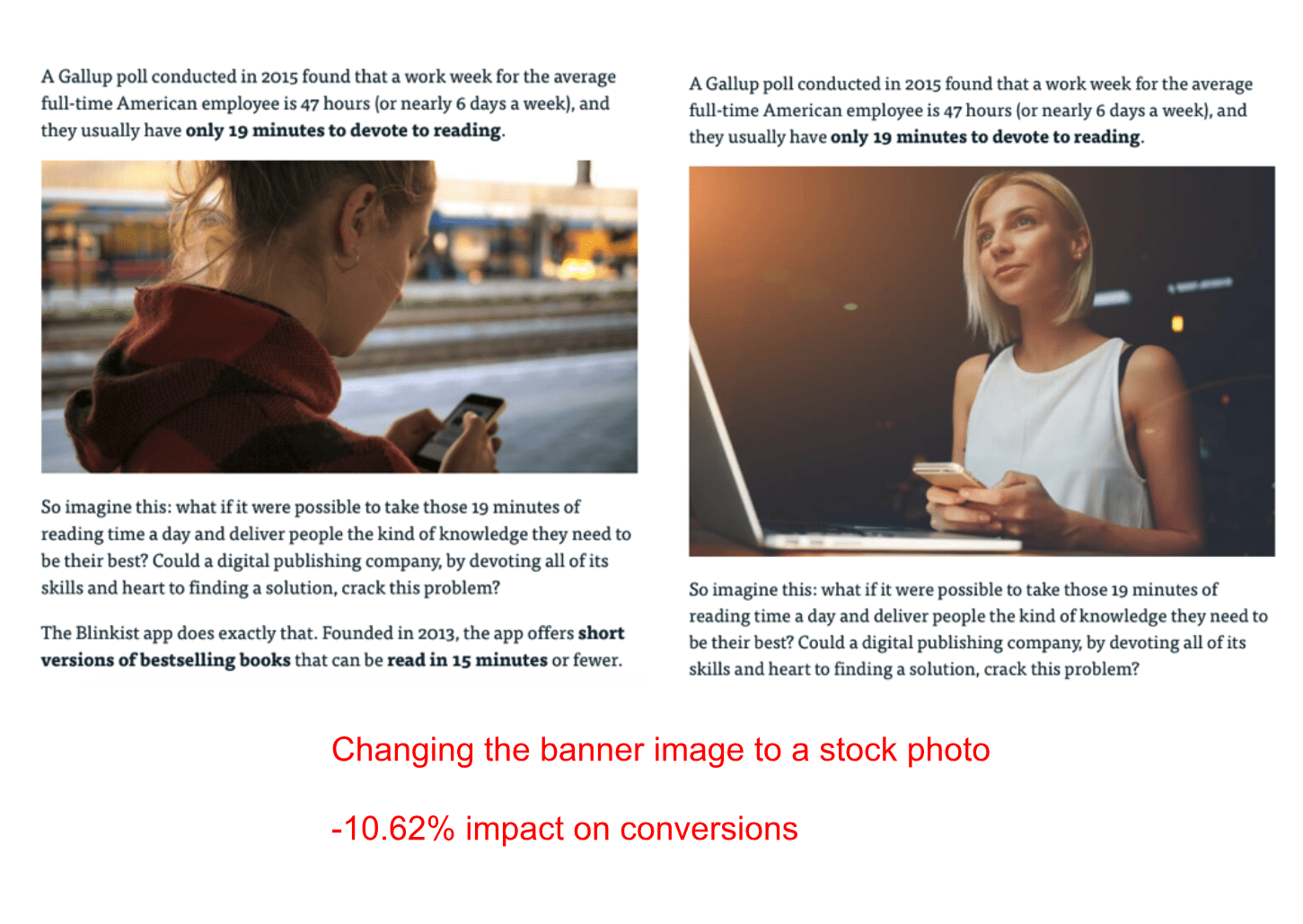
How could this go wrong? It did big time. By using the image on the right, our conversions dropped by -10.62%.
Our first instinct was that stock photos turn people off, so we tested another photo of our colleagues.
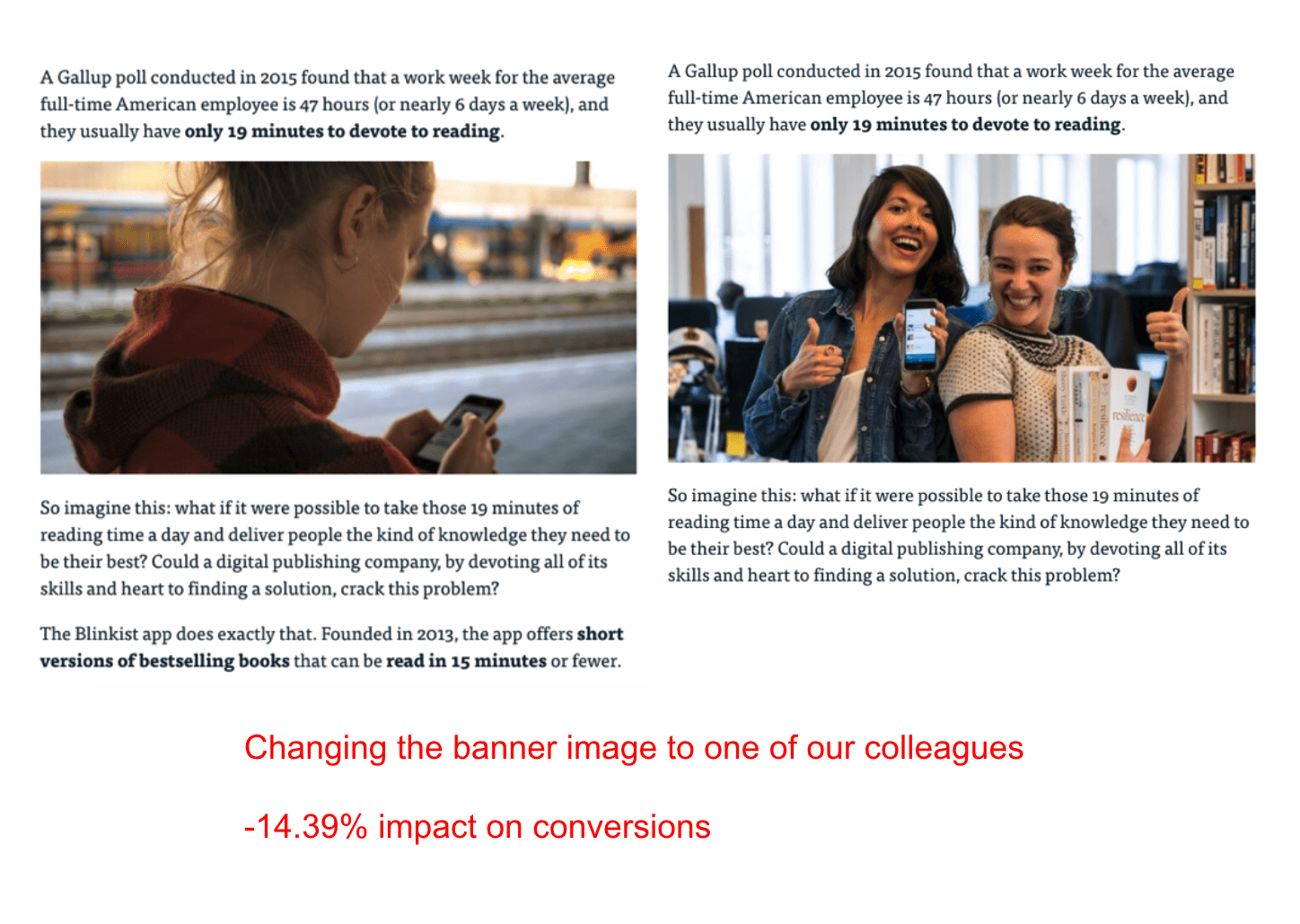
This was even worse, our conversions dropped by -14.39%.
By this point, we thought — If it didn’t matter what image we used, do we need it at all? So we tried removing it altogether.
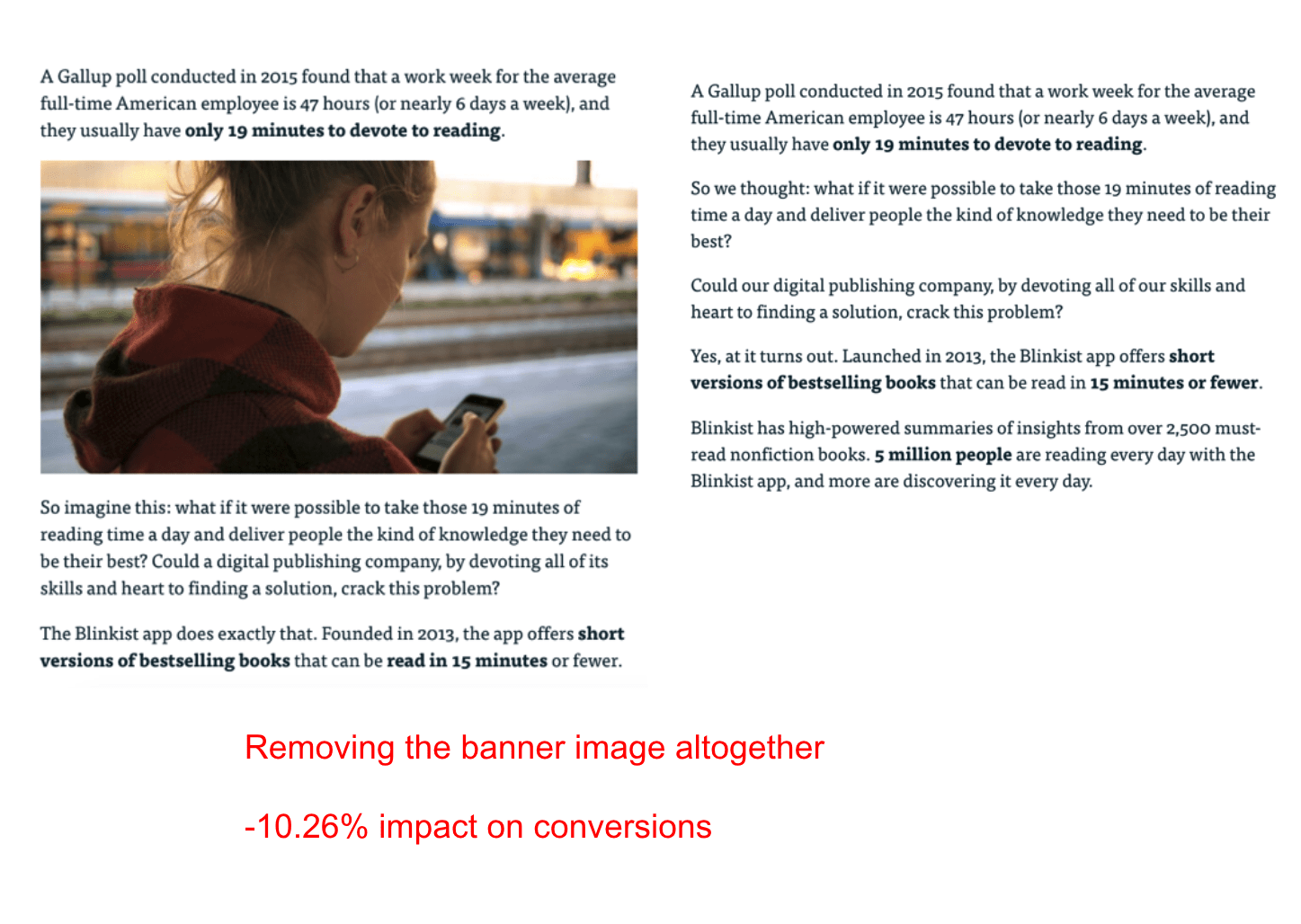
What came next was no surprise, the control won again.
We didn’t stop here, we also tested moving the banner image up and down, but nothing beat the control. We were stuck with a boring image that cannot be replaced, removed, or repositioned.
This is when it dawned on us, we wasted days going after peanuts when we could be doing other more fun and fruitful things (like taking a Friday afternoon off to nurse our tired brains).
The lesson is clear:
It’s futile to make sense of every little piece of an article, focus on the big stuff, and iterate within the F-shape.
How to get started
As you can see, content marketing isn’t just good for growth, it’s an opportunity for a company to reflect on its values. Follow this article to get started, and once you have something to work with, hop over to my other article How To Grow Your App Through Content Marketing for the campaign side of things!












